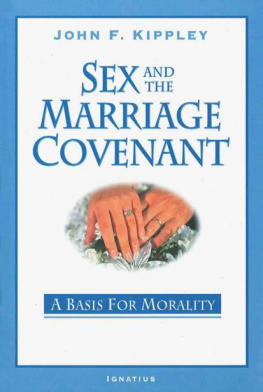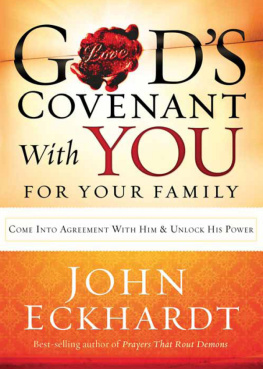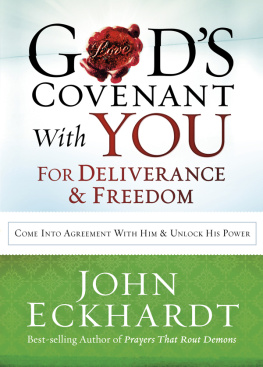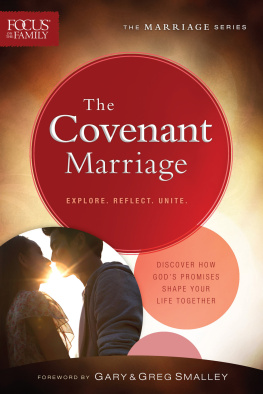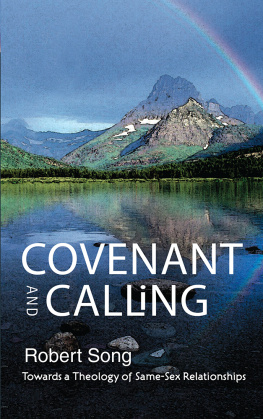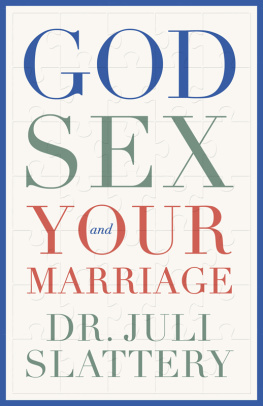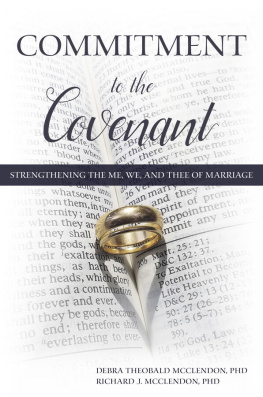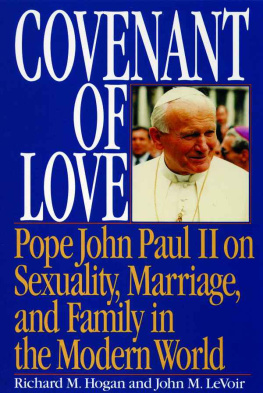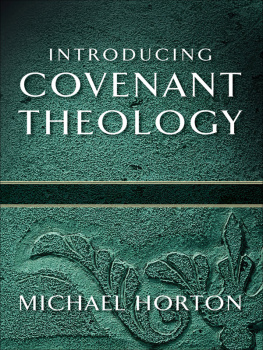SEX AND THE MARRIAGE COVENANT
JOHN F. KIPPLEY
SEX AND THE
MARRIAGE COVENANT
A Basis for Morality
Second Edition
IGNATIUS PRESS SAN FRANCISCO
First edition published by the Couple to Couple League
1991 by John F. Kippley
Second edition published with ecclesiastical approval:
Permission to Publish
+ Most Reverend Carl K. Moeddel
Auxiliary Bishop and Vicar General of Cincinnati
February 15, 2005
The Nihil obstat and Imprimatur are a declaration that a book or pamphlet is considered to be free from doctrinal or moral error. It does not imply that those who have granted the Permission to Publish agree with the contents, opinions, or statements expressed.
Photograph by Corbis
Cover design by Riz Boncan Marsella
Second edition 2005 by John F. Kippley
All rights reserved
This edition published by Ignatius Press, San Francisco
ISBN 978-0-89870-973-5
ISBN-0-89870-973-3
Library of Congress Control Number 2004103520
Printed in the United States of America
CONTENTS
Part One
The Covenant Proposal
Part Two
Conscience
Part Three
Pastoral Considerations
Part Four
The Context of the Controversy
Part Five
The Historical-Traditional Teaching
DEDICATION
Up until 1930, Christian churches had been unanimous in teaching that it was immoral to use unnatural methods of birth control. On August 14, 1930, the bishops of the Church of England broke away from this teaching. On December 31, 1930, Pope Pius XI reaffirmed the previously universal teaching in his famous encyclical, Casti Connubii (Concerning Chaste Marriage ). In the midst of the sexual revolution of the 1960s and the debate about hormonal methods of birth control, Pope Paul VI again courageously reaffirmed this teaching in Humanae Vitae .
This book, first published shortly after the sixtieth anniversary of Casti Connubii , is dedicated to its brave and holy author, Pope Pius XI.
It is dedicated also to Pope John Paul II, who was singularly courageous and unprecedented in his frequent but always varied affirmations of the teaching of Casti Connubii and Humanae Vitae . He also gave the Church a mother lode of teaching documents that will be mined for years to come. Of particular interest to students of moral theology and the subject of this book are Familiaris Consortio, Veritatis Splendor, Evangelium Vitae , and the 129 lectures that constitute The Theology of the Body .
May this book and especially Chapter 7 on Forming a Correct Conscience be a memorial to the great work of John Paul II who went to his heavenly reward as this book was in the process of publication.
ABOUT THE TITLE
This book is an outgrowth of the authors previous book Birth Control and the Marriage Covenant , in which he related centuries of Christian teaching against unnatural forms of birth control to the biblical covenant of marriage.
In the years since the dissent from Humanae Vitae (1968) launched a sexual revolution within the Catholic Church, it has become evident that such dissent logically and historically includes the whole realm of sexual behavior, not just birth control. Thus the scope of the present book has been expanded accordingly.
The thesis of this book is that God intends that sexual intercourse should be at least implicitly a renewal of the marriage covenant. From this it follows that the marriage covenant provides the criterion to evaluate the morality of every sexual act. Thus the title, Sex and the Marriage Covenant , seems to be an appropriate description of the contents of this book.
ACKNOWLEDGMENTS
I wish to express my deep gratitude to my first-edition manuscript reviewersFr. Edward Bayer, S.T.D.; William May, Ph.D.; Fr. Donald McCarthy, Ph.D.; Fr. Steven Rohlfs, S.T.D.; Janet Smith, Ph.D.; Msgr. William B. Smith, S.T.D.; and Fr. Robert Zylla, S.T.L. Their constructive criticism was extremely helpful and was responsible for many an improvement. Also very important to me was their encouragement to bring this project to a conclusion.
I am also most grateful to those who helped me with the second edition, some of whom are mentioned above. Their comments, questions, and disagreements led me to develop my thinking more fully. The opinions and conclusions are fully my own responsibility.
I thank also the following publishers for permission to quote as needed:
The Documents of Vatican II , Abbot-Gallagher edition; reprinted with permission of America Press, Inc., 106 West 56th Street, New York, NY 10019, 1966. All rights reserved.
Scripture quotations have been taken from the Revised Standard Version of the Holy Bible, the Old Testament 1952, the Apocrypha 1957, the New Testament 1946; Catholic edition of the Old Testament incorporating the Apocrypha 1966 and Catholic edition of the New Testament 1965 by the Division of Christian Education of the National Council of the Churches of Christ in the United States of America.
Humanae Vitae , translated by Marc Caligari, S.J., Ignatius Press, San Francisco, 1978.
Harvey Cox, The Secular City , 1965; reprinted with permission of Macmillan Publishing Co., New York, 1965, 1966 by Harvey Cox.
John Ford, S.J., and Germain Grisez et al., The Teaching of Humanae Vitae: A Defense , Ignatius Press, San Francisco, 1988.
Germain Grisez et al., Every Marital Act Ought to Be Open to New Life, The Thomist , July 1988; with permission of The Thomist , Washington, D.C.
Brian Harrison, Humanae Vitae and Infallibility, Fidelity , November 1987; with permission of Fidelity , 206 Marquette Avenue, South Bend, IN 46617.
Thomas J. ODonnell, S.J., Repentance following directly willed contraceptive sterilizations, The Medical-Moral Newsletter , January 1989; with permission of Ayd Medical Communications, Baltimore, Md.
Karl Rahner, Nature and Grace , 1964; used with permission of Sheed and Ward, Kansas City, Mo.
ABBREVIATIONS
CCL Couple to Couple League
DCQ Declaration on Certain Questions Concerning Sexual Ethics
FC Familiaris Consortio
GS Gaudium et Spes
HV Humanae Vitae
LOR LOsservatore Romano
NFP natural family planning
PCHP On the Pastoral Care of Homosexual Persons
TB Theology of the Body
INTRODUCTION
In the immediate aftermath of Humanae Vitae , I scanned the Catholic newspapers and periodicals looking for the announcement that a recognized theologian was writing a theological defense of the teaching reaffirmed by the encyclical. I found none. There were good things being written by Germain Grisez, Mary Joyce, and Dietrich von Hildebrand, but they all wrote from the perspective of philosophy as distinct from theology.
I had been teaching adult education classes on the Roman Catholic faith since 1963, and I had faithfully transmitted the Churchs teaching about the immorality of using unnatural methods of birth control in each one of my regular courses of instruction in the faith. I used the arguments that were then available, especially the argument about the wrongful use of a basic human power and the analogy with gluttony and the vomitorium.
However, whatever their intrinsic merits, such arguments were not making much of an impression and were under constant attack by Catholic pro-contraceptionists in the mid-1960s. Thus, I looked for another way to defend the teaching, a way that was more personal, a way that married couples could relate to their own marriage relationship.
I reflected on the two realities that (1) marriage is the result of unreserved givingfor better and for worseand (2) contraceptive intercourse is sex with very serious reservationfor better but positively excluding the imagined worse of possible pregnancy. Marriage comes into being by a couple unreservedly entering Gods covenant of marriage; contraceptive intercourse contradicts the very essence of the marriage covenant. From these considerations I developed the covenant theology of sexuality described in this book.
Next page
